The word that unites these two arcane Venetian architectures, the Fontego dei Tedeschi and Palazzo Contarini del Bovolo, is fontego. Yes, because Palazzo Contarini is a casa-fontego, albeit in its meaning of private residence. But fontego (or fondaco, in Italian) what does it mean? What is the origin of this term that recalls the Mediterranean and its trade routes along which the Venetians transited for more than a millennium? The origin is the Arabic word funduq, which in turn comes from the Greek πανδοκε�?ον (pandocheion) meaning “hotel for all.” Not much different were the caravanserais of North Africa and the Middle and Near East that were used for stopping caravans crossing the desert.
Venice had established itself during the Middle Ages as a major transit emporium for land and sea trade routes throughout Europe and the East . Several of these fonteghi existed in the city; they were equipped to provide hospitality to merchants of the various ethnic groups and nations arriving in the lagoon. Traces or memories remain of those of the Turks, Persians, Moors and, indeed, Germans.
There were also a number of case-fontego in Venice, most of them along the Grand Canal, the main artery of the city, through which the whole world transited. Just one example: the two town hall buildings of today, Ca’ Farsetti and the adjacent Ca’ Loredan, both belong to this type. The “casa da stazio,” that is, the family residence, was one with the business, a microcosm where people lived and conducted their business: a dominical palace and commercial center at the same time.
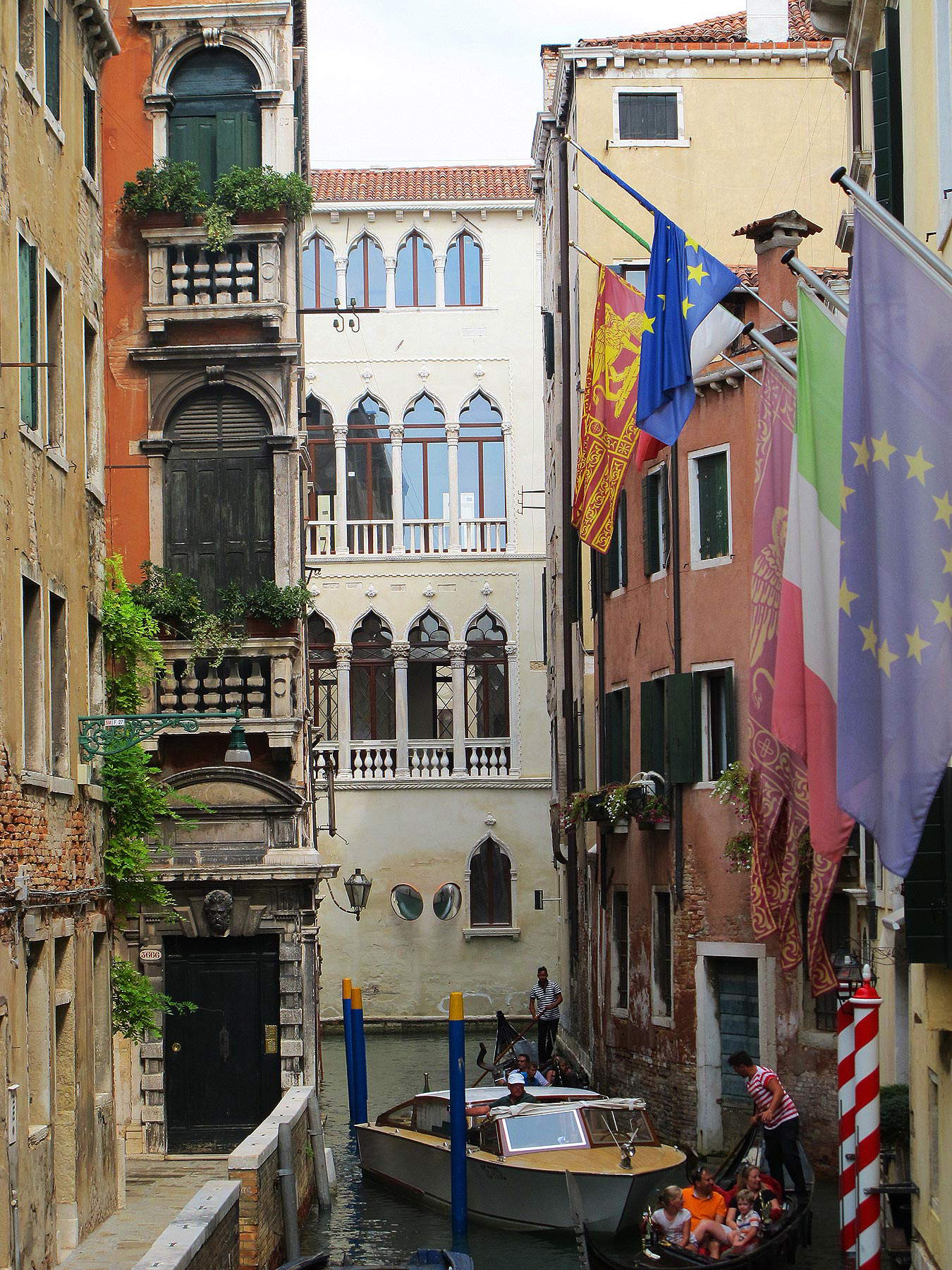 |
| Façade of Palazzo Contarini del Bovolo |
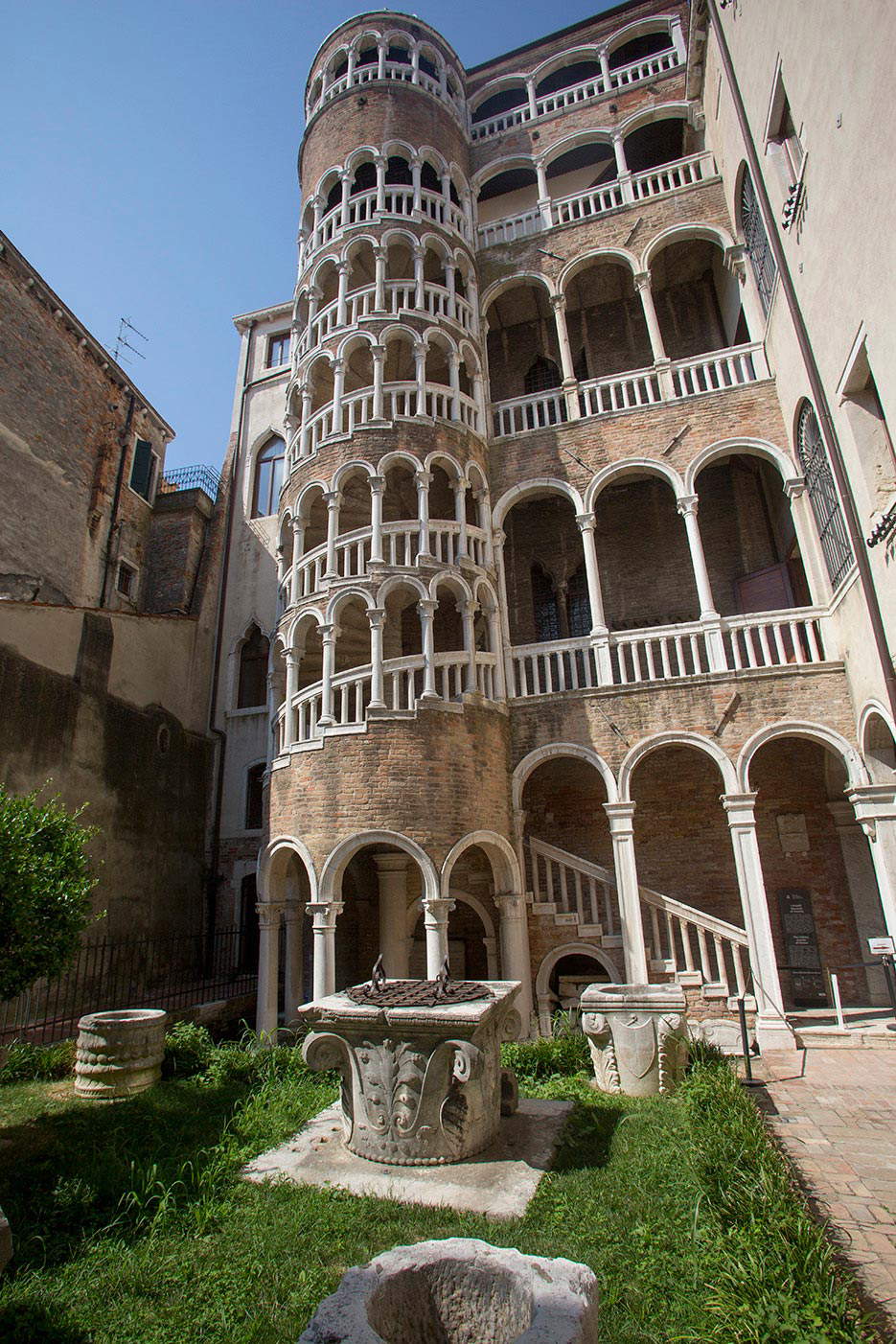 |
| The famous staircase of the Palazzo Contarini del Bovolo |
The ground floor with its large inner courtyard is the place designated for the loading, unloading and storage of goods: in fact, boats could dock directly at the front door; there were warehouses, offices and space for bargaining, like a private square. On the upper floor the mezzanine houses the offices and the administrator’s residence; then there are the first and second noble floors reserved for the family, while the attic houses the servants.
The Contarini of the San Paternian branch, who would later be called “del Bovolo,” following the stir caused by the bizarre and grandiose staircase built at the end of the fifteenth century, could boast illustrious ancestors, including a doge, Andrea Contarini, winner in 1381 of the bloody war against Genoa (war of Chioggia), the arch enemy of all time. They were one of the richest and most powerful families of the Serenissima and, like the entire aristocratic class, owed their fortunes to trade and did not shy away from making their political role coexist with the more “prosaic” profession of merchants and businessmen.
As for the actual fontego, like that of the Germans, although derived from a similar architectural conception, albeit on a much larger scale in the dimensions of the spaces, it differs from the casa-fontego in that it was an “institutionalized” place as early as the mid-thirteenth century to accommodate all foreign merchants from a generic Northern Europe passing through Venice. They did not reside in the city except for the time necessary to transact their business, although they often kept the same rooms, sometimes for many years, paying due rent to the magistrature in charge of the Visdomini. Confining all foreign businessmen in one building, under the guise of providing them with protection and services, allowed the Republic to control, even fiscally, all their dealings within the borders of the Serenissima. This system of controlling foreigners was an all-Venetian peculiarity. In the cities of the Levant, foreign merchants had their own fondaci, granted to them by the rulers through privileges, and were run autonomously. The Venetians had, in the port cities (think of Constantinople), quarters designated to them with offices, dwellings and stores, while the Republic never gave this right to foreigners; on the contrary, over the centuries the controls and limits became tighter and tighter.
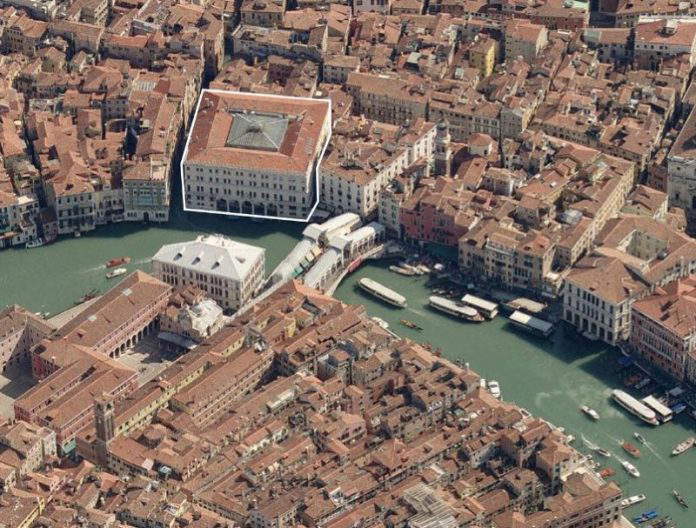 |
| View of the Fondaco dei Tedeschi from above |
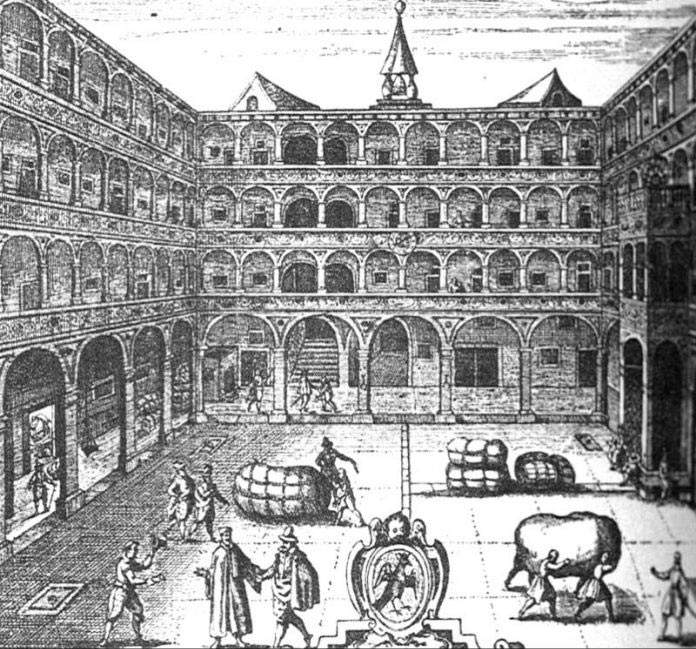 |
| Engraving by Rafhael Custos (1616) depicting the interior of the Fondaco dei Tedeschi |
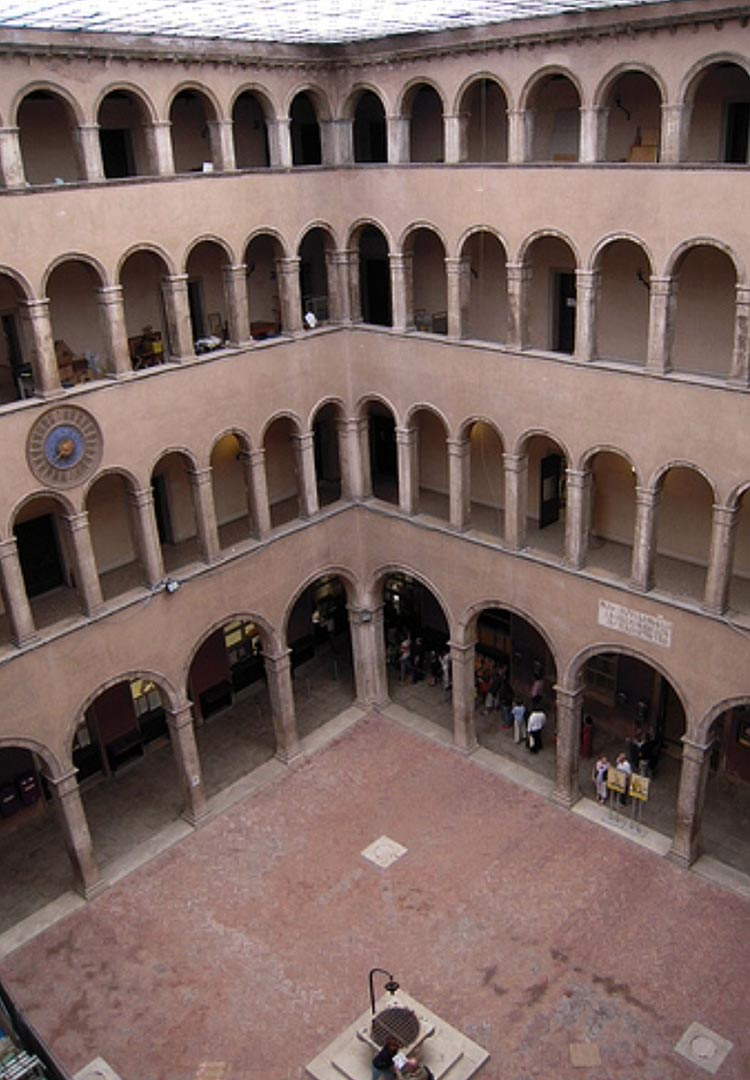 |
| Inner courtyard of the Fontego before the 2008-2016 renovations |
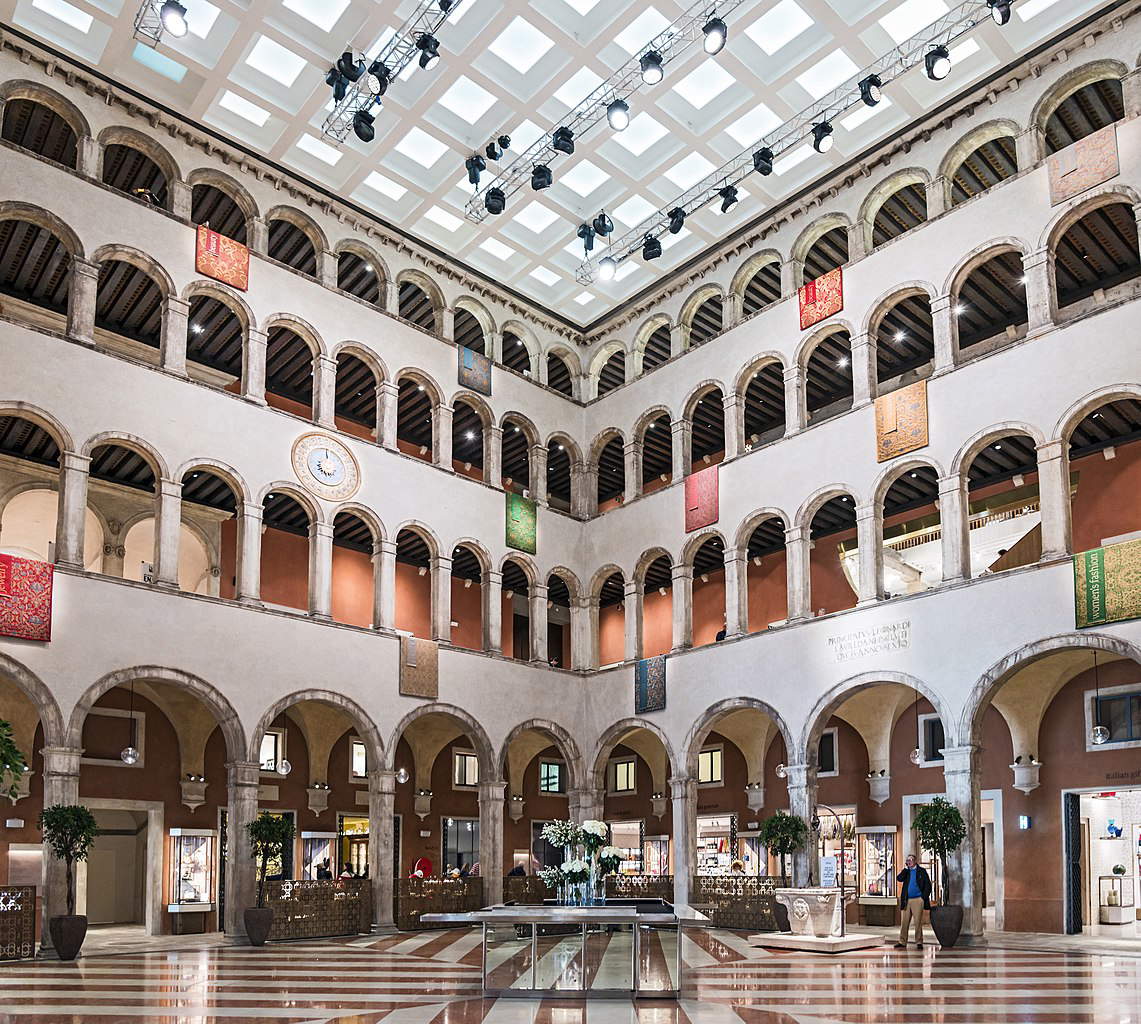 |
| Inner courtyard of the Fontego after the 2008-2016 renovation works. Ph. Credit Didier Descouens |
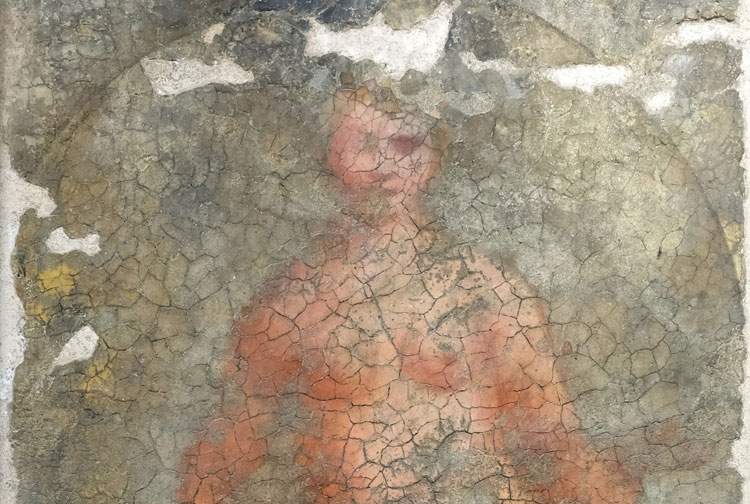 |
| Giorgione, The Nude, one of the frescoes that decorated the Fondaco dei Tedeschi (c. 1508; detached fresco, 250 x 140 cm; Venice, Gallerie dellAccademia) |
In 1505 a frightful fire destroyed to the foundations the Fondaco’s great wooden structure, which had been rebuilt, again following a similar accident, as early as 1318. The Senate reacted with great promptness, considering that the Northern European market represented a very important, vital square for Venice, and as early as the morning after the great fire, on January 29, it resolved to “give prestissimum restaurationi fontici nostri Theutonicorum combusti.” Giorgio Spavento (Venice, c. 1440 - 1509) and a German architect, whose name we know only, Hyeronimus, would be in the running for the project, and he would eventually emerge as the winner. Soon, perhaps because of conflicts related to the ongoing construction site, the German left Venice and gave the commission to his colleague. In turn, a few months later, Giorgio Spavento would find himself forced to leave the commission to Antonio Abbondi known as lo Scarpagnino (Venice?, 1465/1470 - Venice, 1549), as he was burdened by too many commitments as Proto of San Marco. The official inauguration of the new fontego was held on August 1, 1508. In a very short time, therefore, an immense building was constructed, a synthesis of a Mediterranean language of Islamic tradition married to the German tradition and to the suggestions of the nascent Italian Renaissance culture, keeping away, however, from a courtly, old-fashioned style, preferring the sobriety and severity of the form devoid of decoration. The only aesthetic license granted by the Senate was the enormous pictorial cycle (the frescoes have all but disappeared today) of the facades commissioned from the new stars of Venetian art: Giorgione and Titian.
The interior of the Fontego has retained its original structure. On the first floor, lots of warehouses for goods and, in the center, a full-fledged square, surrounded on all sides by four orders of airy loggias overlooked by the eighty rooms dedicated to the temporary residence of foreigners.
The interior appearance of the Palazzo Contarini del Bovolo, the construction of which is attributed, given its many similarities to the Fontego dei Tedeschi, to Giorgio Spavento, was the same: an internal courtyard with a series of loggias that pierced all four floors of the palace. Between the seventeenth and eighteenth centuries, when the building, which had been devoid of maintenance for several decades, was on its way to decay, all the loggias were plugged, both to remedy static problems that had arisen and to gain space to rent out. From being the residence of an illustrious and emblazoned family, the palace was gradually being recycled into an inn of the lowest order. We are reminded of this by the name of the calle that gives access to the Scala del Bovolo: Calle de le Locande.
Warning: the translation into English of the original Italian article was created using automatic tools. We undertake to review all articles, but we do not guarantee the total absence of inaccuracies in the translation due to the program. You can find the original by clicking on the ITA button. If you find any mistake,please contact us.